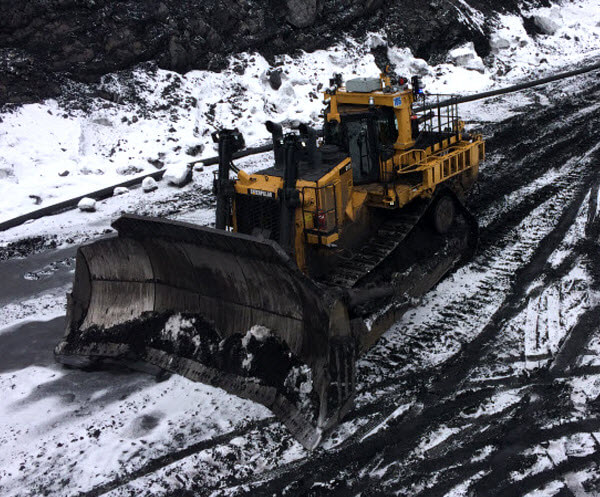
“It’s the coolest thing to see a big piece of equipment working with no one behind the wheel,” says Ryan Goodwin, mining account manager for Finning in Elkford, B.C. Ryan worked with Teck on a remote dozer solution for operations at their Coal Mountain location. “We needed a solution for a geotechnical hazard,” says Ben David, senior engineer mining at Coal Mountain. “We were de-stabilizing a wall by removing a buttress to get the coal underneath and we couldn’t safely send an operator in on a piece of equipment to get the coal out.”
The solution? Finning installed the Cat® Command for Dozing on Teck’s D11T so it could be operated remotely to safely remove the coal. “Cat has two options available,” says Ryan. “The remote console, an over-the-shoulder hand-held unit with a controller that allows the operator to operate the dozer remotely within line-of-site. And the remote operator station, a fully enclosed trailer with a D11 seat, joysticks and pedals, similar to an actual dozer cab, and video monitors, to be run from wherever you need it, connected to the dozer via radio network. Teck used a hybrid of the two.”
Share This